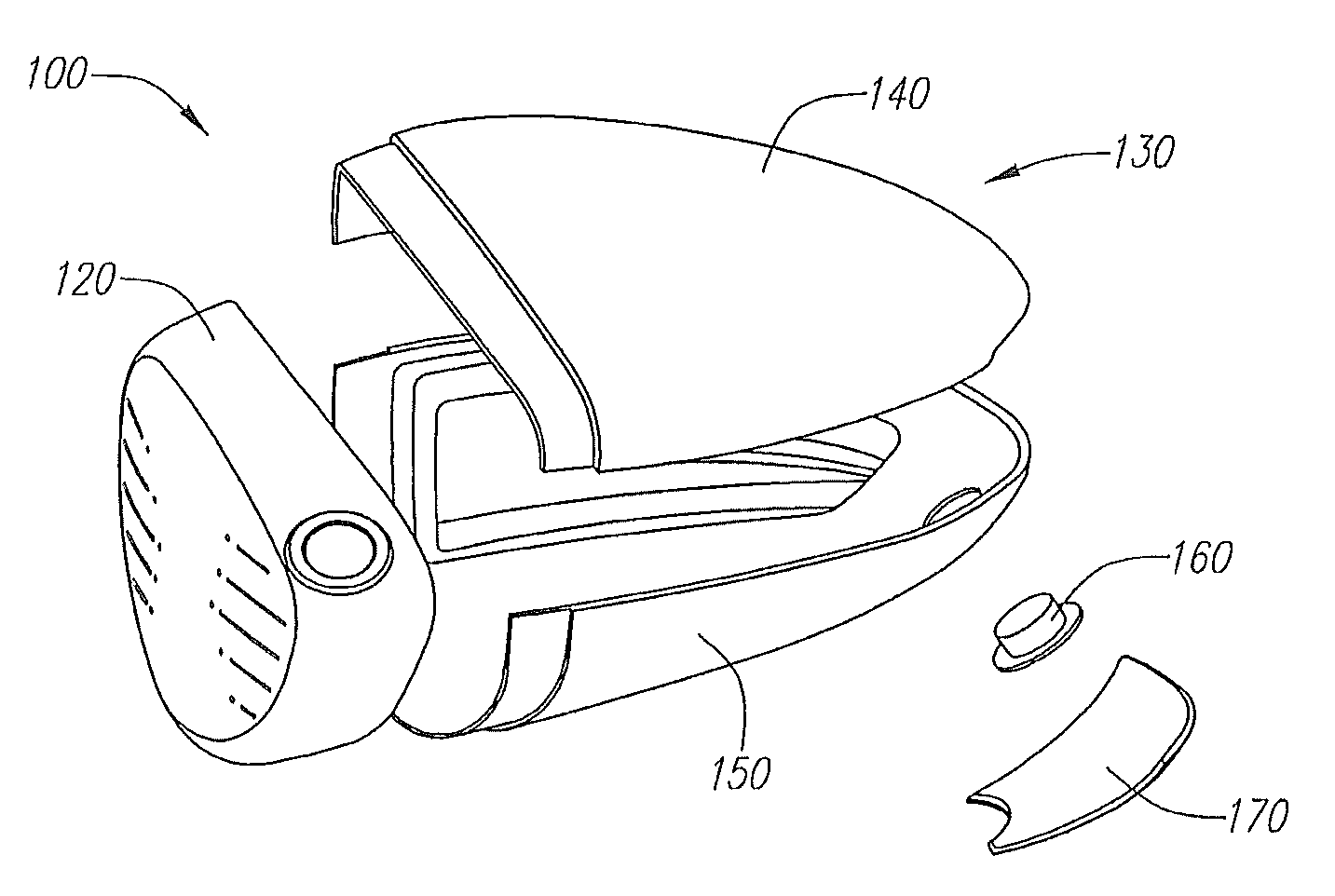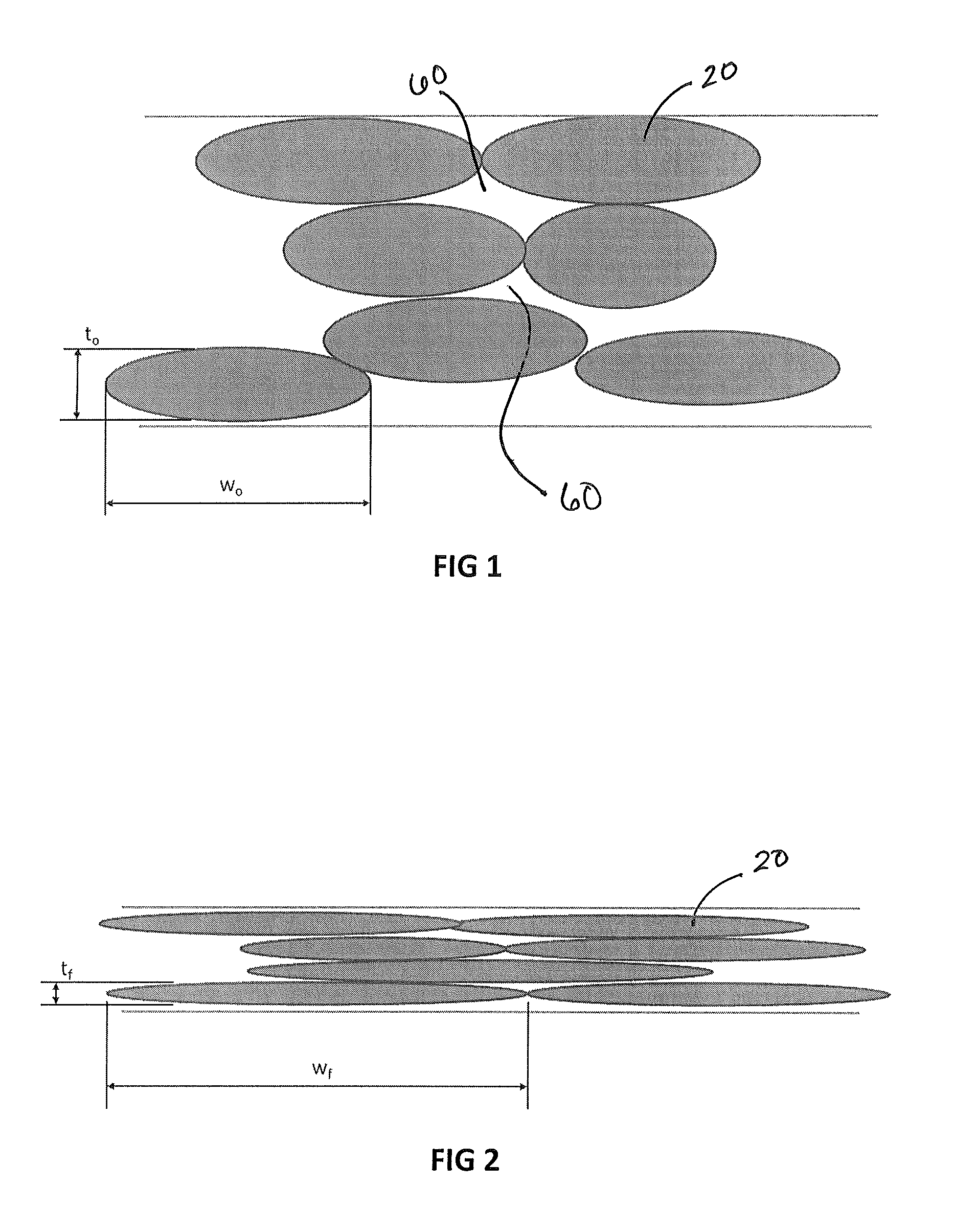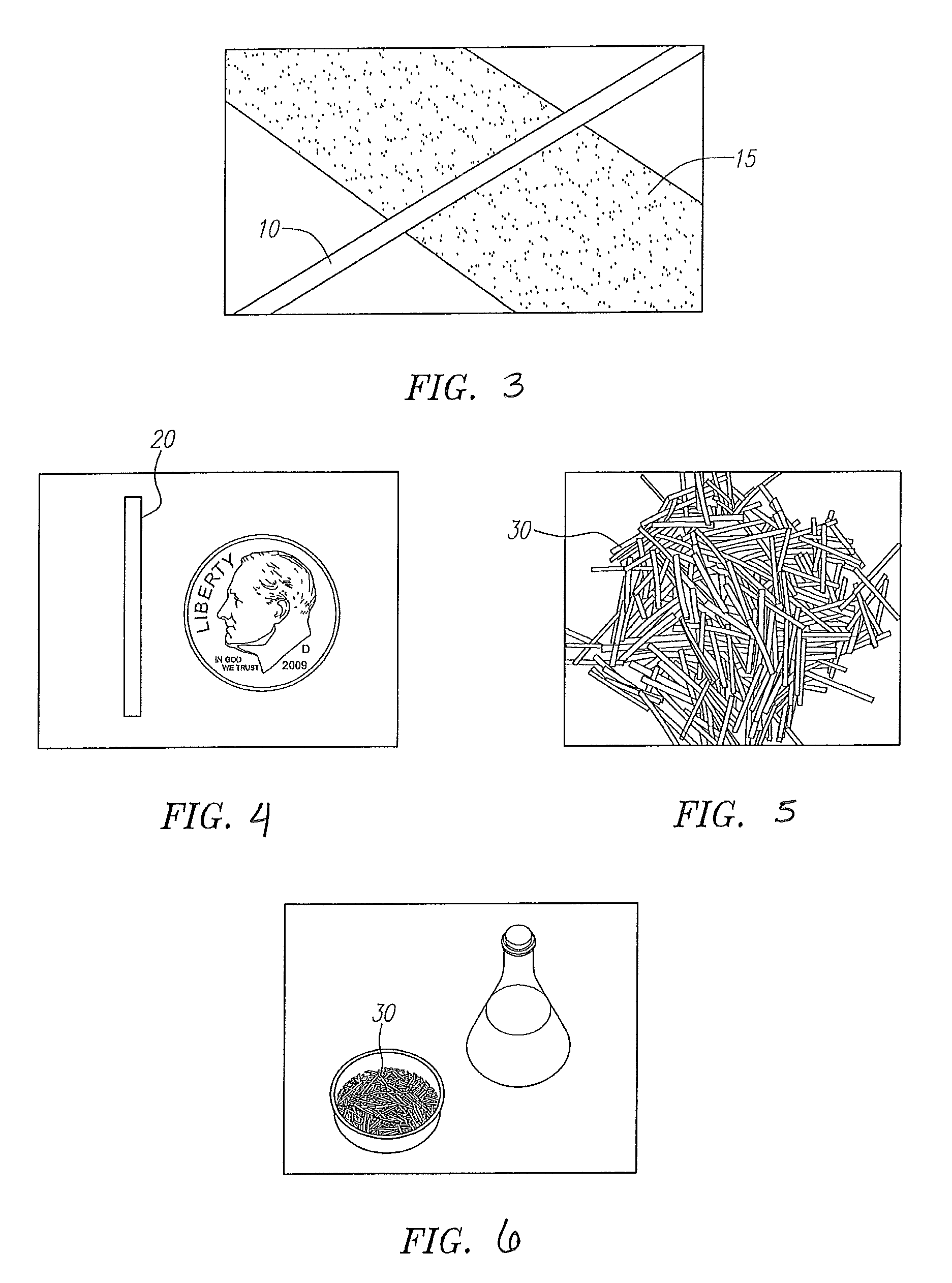Golf club head with a compression-molded, thin-walled aft-body
a golf club head and compression molding technology, applied in the field of multi-material golf club heads, can solve the problems of increasing tool complexity, inability to create undercuts, and standard molding compounds that are not designed to be used in parts with very thin walls
- Summary
- Abstract
- Description
- Claims
- Application Information
AI Technical Summary
Benefits of technology
Problems solved by technology
Method used
Image
Examples
example 1
[0058]A preferred embodiment of a golf club head 10 formed using the molding compound and molding process of the present invention is shown in FIG. 10. The golf club head 100 is a driver-type head comprising a face cup 120 and an aft body 130 comprising a crown piece 140 and a sole piece 150. The golf club 100 of the present invention may optionally comprise additional pieces, including, but not limited to, a swing weight 160, a rear cover 170, and a ribbon or skirt (not shown) interposed between the crown 140 and sole 150 pieces.
[0059]The crown piece 140 and sole piece 150 of the aft body 130 are separately compression molded using the molding compound and process of the present invention. Forming the aft body 130 in two or more pieces makes it easier for a manufacturer to mold the aft body 130, because it is easier to mold half of an aft body 130 than to mold the whole aft body 130 at once. It also removes the need for undercuts. The compression molding process of the present inve...
PUM
 Login to View More
Login to View More Abstract
Description
Claims
Application Information
 Login to View More
Login to View More - R&D
- Intellectual Property
- Life Sciences
- Materials
- Tech Scout
- Unparalleled Data Quality
- Higher Quality Content
- 60% Fewer Hallucinations
Browse by: Latest US Patents, China's latest patents, Technical Efficacy Thesaurus, Application Domain, Technology Topic, Popular Technical Reports.
© 2025 PatSnap. All rights reserved.Legal|Privacy policy|Modern Slavery Act Transparency Statement|Sitemap|About US| Contact US: help@patsnap.com



